Choosing to own any animal is always a big commitment, and whatever reasons you have for owning them, you can set yourself up for frustration and failure if you choose the breed poorly. Choosing a breed that is suited for your purposes and also your personality can make your life a lot easier.
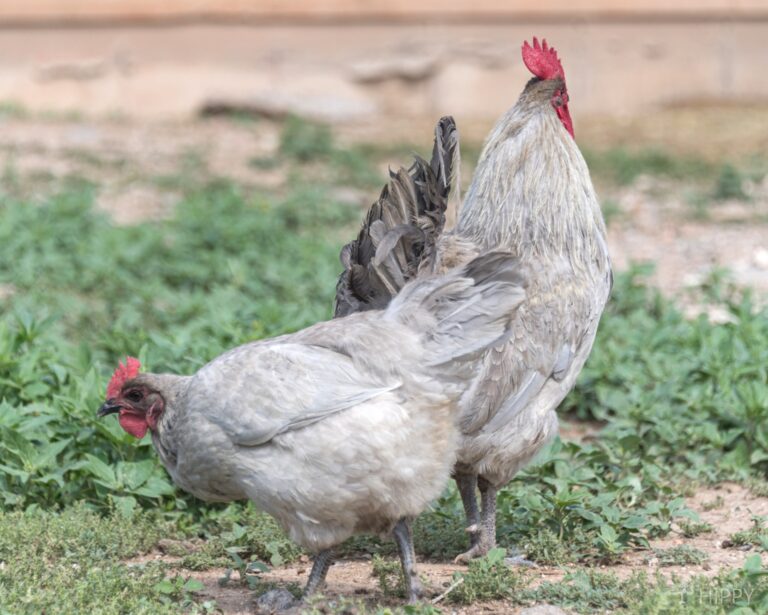
This is definitely true when it comes to chickens! To the uninitiated, every chicken is pretty much the same except for the color of their feathers but we know better…
Today we’ll be looking at the Lavender Orpington, a modern, unofficial variation of a famous heritage breed once raised for meat and eggs.
Today, Orpingtons are kept primarily for show and also for their friendly, docile demeanor, but those alluring gray feathers also make it a favorite with chicken fanciers! I’ll tell you everything you need to know about the Lavender Orpington below.
Lavender Orpington Quick Facts
- Purpose: Dual-purpose, also ornamental.
- Plumage: Lavender, an iridescent medium Gray. Also black, white, splash, buff and blue.
- Eggs Laid Year on Average: 175 to 200.
- Egg Color: Light brown.
- Broodiness: High.
- Average Weight: 9 pounds, roosters. Hens average 7 ½ pounds.
- Average Height: 12 to 15 inches.
- Lifespan: 8 to 10 years
- Temperament: Very friendly, quiet, docile. Prone to being bullied by other chickens.
Find out some more quirky facts here.
What Color and Pattern are Lavender Orpington Chickens?
Lavender Orpingtons are not really a true lavender color: Instead, this kind of plumage refers to a light, shiny gray and is the result of a mutation that affects red and dark brown or blue feathers.
Lavender Orpingtons are immediately identifiable due to this plumage, and are greatly beloved by some chicken fanciers.
But Orpingtons, of course, come in other colors; most notably buff, which is the most common but also black, white, splash and blue.
The Lavender Orpington is becoming very popular recently, and Orpingtons themselves have been popular for many years (and we will soon discover why).
So if you want a lavender Orp, prepare to pay a premium and look hard to find one!
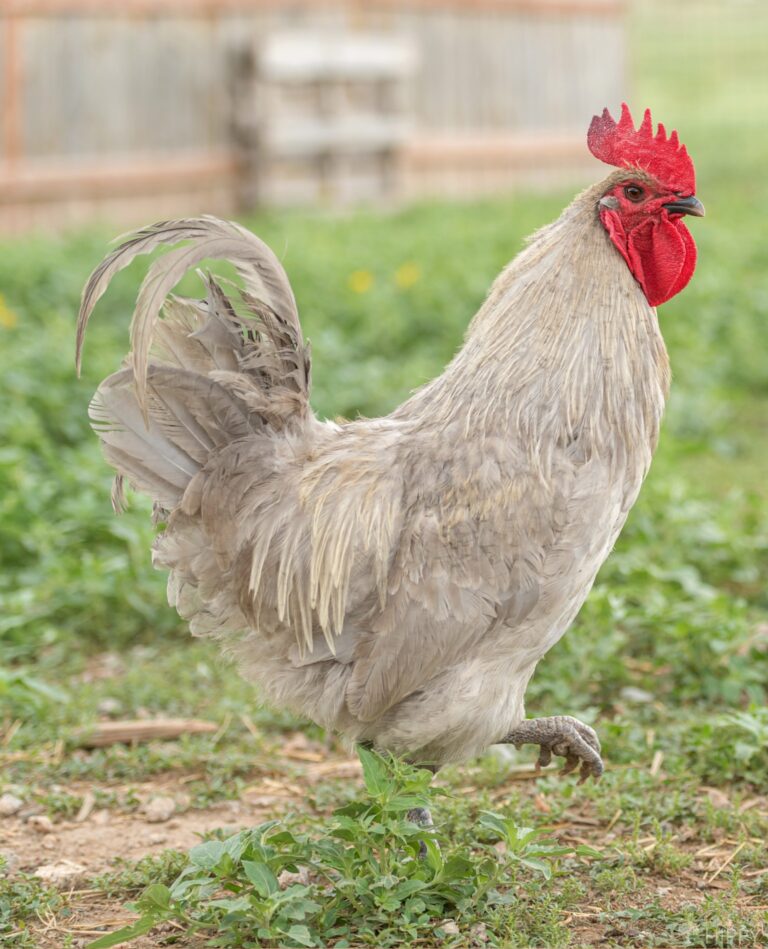
How Big are Lavender Orpingtons?
Orpingtons are heavy chickens, but short and stocky. Roosters average about 9 pounds (4 kgs), but only stand anywhere from 13 to 15 inches tall (33 to 38 cm).
Hens, naturally, are a little lighter but not much shorter, weighing around 7 ½ pounds (3.4 kgs) and standing anywhere from 12 to 13 inches (5.4 to 5.9 cm) tall.
These are hefty chickens to be sure, but they aren’t nearly as big as they would first appear.
Their fluffy, puffed up feathers gives them an oval, almost spherical shape, and they’ve been commonly compared to a teakettle.
Lavender Orpington Essential Characteristics
The Lavender Orpington is, aside from its unique coloration, a traditional Orpington and all other respects, a breed hailing from England that was first developed in the late 19th century after significant experimentation involving Langshan, Minorca and Plymouth Rock chickens.
Intended to be a dual-purpose chicken, the Orpington has undergone something of a full circle journey in life.
Though originally intended to provide meat and eggs, these beautiful chickens soon became the subject of “chicken fever” back in the day, and were increasingly bred for their visual appeal.
The low stance, fluffy plumage and gorgeous coloration make these birds quite attractive and adorable, enduring them too many keepers and would-be owners.
Although Orpingtons were once said to regularly lay more than 320 eggs every year on average, that number has since diminished with selection for appearance, though they remain quite respectable layers.
Today, the Orpington remains an entirely good dual purpose chicken, one that will lay many eggs and also has delicious, high quality meat. But it is ostensibly still a show chicken intended for exhibition.
In short, the poultry industry has no care or concern for the Orpington which has long since been surpassed for practical matters, but it is an entirely viable chicken for smaller operations or backyard keepers.
Something else that has endeared it to owners is its amazingly warm, friendly and downright docile personality.
These chickens are famous for forming bonds with people, and they rarely, if ever, fight even amongst themselves. Orpingtons are so docile they will rarely defend themselves!
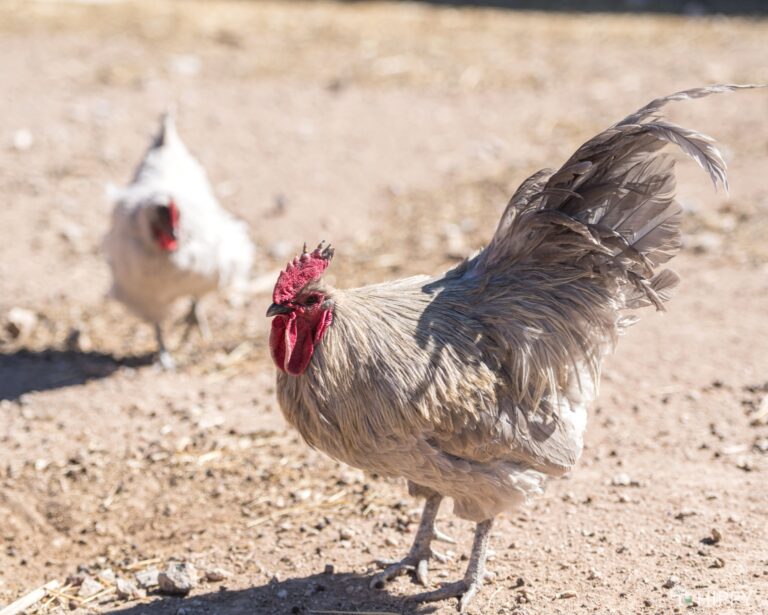
What are Lavender Orpington Chickens Raised For?
Today the Orpington is an exhibition chicken or kept in smaller operations or private hands as a dual-use bird.
They provide plenty of high-quality, delicious meat with a fine texture, and many eggs year in and year out, even through the winter.
Are Lavender Orpington Chickens Good Layers?
Yes! Although the modern Orpington will rarely, if ever, meet its historical egg production, you can still depend on a healthy Orpington hen to lay between 175 and 200 eggs every year.
The good news is that Orpingtons regularly lay right through the winter, and these birds are already quite adapted to cold weather thanks to their dense and fluffy plumage which will keep them warm even when the temperature is truly bitter cold.
But the bad news is that Orpingtons are also famously broody chickens and will intend to hatch many clutches of eggs that they lay, meaning that their peak output can be greatly reduced.
Managing this tendency to go broody is important if you want to maximize egg production from your Orpingtons.
What Color Eggs Do Lavender Orpingtons Typically Lay?
Orpingtons lay light brown eggs.
When Do Lavender Orpingtons Start Laying?
Orpingtons begin laying eggs pretty early, though not as fast as some other breeds. You can expect most hens to begin laying around a 5 months of age, though it is not uncommon for some to take as long as 7 months to begin laying.
What Do Lavender Orpington Chickens Eat?
Orpingtons eat pretty much what all other domestic chickens eat, and the primary component of their diet should be chicken feed, and specifically one that has plenty of protein and has all of the other micronutrients that chickens need.
The remainder of their calorie intake, about 10% of it in total, should consist of other natural or wholesome foods, including plant matter in the form of berries, nuts, roots, seedlings, shoots and the like along with some produce to include various vegetables and fruits that are safe for chickens.
Orpingtons will also happily eat bugs and worms when allowed to free range, along with a little bit of grass and other incidental food items.
That said, they are only decent foragers; they tolerate confinement well and are more than happy to eat food that is brought to them or provided regularly.
Do not count on your Orpingtons to fulfill their dietary needs for whole foods by foraging and hunting. Be prepared to prepare it all for them!
Also, Orpingtons, like all other domestic chickens, need supplemental grit in their diet to help them digest food and may need supplemental vitamins and minerals to account for any deficiencies elsewhere in their diet.
They are a heavier breed of chicken, even though they are not very tall, and will require more calories and protein than smaller breeds, with laying hens in particular needing extra food and minerals.
But so long as you can provide for these basic staples your Orpingtons don’t have any other special dietary needs because of their breed or color.
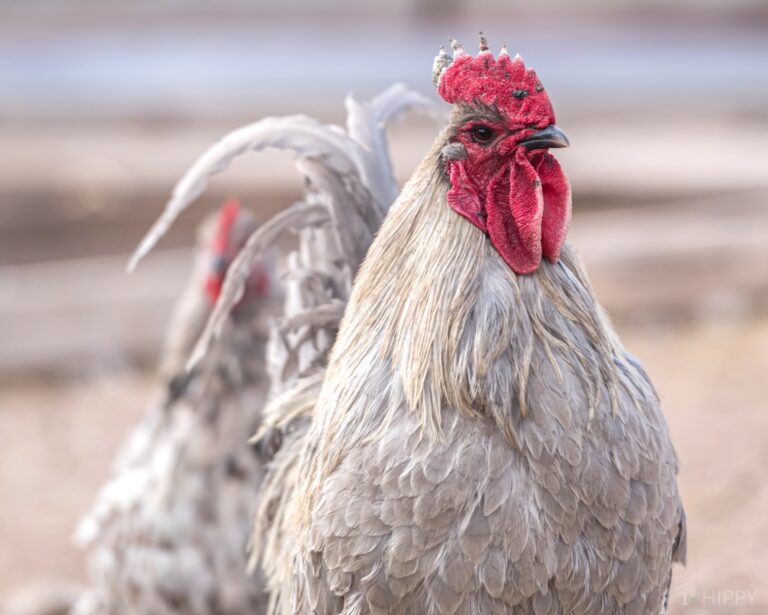
How Long Do Lavender Orpington Chickens Typically Live?
The Orpington is a surprisingly long-lived chicken, particularly for such a heavy breed.
Orpingtons will typically live between 8 and 10 years, and if you want a chicken as a pet, a common purpose for Orpington, you’ll be able to share a lot of life together.
Are Lavender Orpingtons Prone to Particular Health Issues?
Lavender Orpingtons, like all Orpingtons, are generally healthy, hardy chickens. However, they do have a couple of specific vulnerabilities owing to their weight and also to that fabulously fluffy plumage.
Let’s consider the weight issue first. Orpingtons are a heavier breed of chicken, and they also have a low stance, meaning they are not particularly long legged.
This makes Orpingtons so much more vulnerable to injury whenever they have to jump down from a roost, perch or Coop door.
This can in turn lead to leg and foot injuries, including bumblefoot, which can be problematic for them.
The best way to manage this issue is to simply keep them closer to the ground. Coops should have wide doors with easily traversable ramps to help them get in and out. Roosting bars should be set somewhat lower than normal.
Generally speaking, take what care you can to prevent falls and longer drops and they shouldn’t have too many issues.
The plumage can be very troublesome when it comes to infestations of lice, mites and other parasites.
Particularly around their vent, on their underside and beneath their wings, injury caused by these infestations can go unnoticed until it is too late and your chickens are suffering terribly.
To prevent this, you’ll have to inspect them thoroughly and regularly, especially if you’ve noticed outbreaks of any of these critters or if other members of the flock are noticeably suffering from them.
Control, remediation and extermination are all possible using typical methods and treatments, but it is up to you to keep a sharp eye out for trouble.
Assuming you can take care of these two relatively minor issues, your Orpingtons should enjoy good health.
Are Lavender Orpington Chickens Friendly?
Yes, Lavender Orpingtons are fantastically friendly! More than many other kinds of chicken, and many heritage breeds in particular. Orpingtons are super-friendly birds.
This is what has made them so appealing to so many keepers, whether they are being used for utility purposes or not.
Orpingtons are almost never aggressive, very rarely fight for any reason and rapidly form bonds with adults and children alike.
Especially for keepers that have kids, or just keepers that are a little nervous about interacting with her chickens, the docile and calm temperament of the Orpington makes them a perennial favorite and a great choice.
As true pet chickens, the Orpington is tough to beat.
Do Lavender Orpingtons Get Along with Other Chickens?
Yes, Orpingtons get along just fine with other chickens, but other chickens might not get along with them if that makes sense.
Orpingtons are docile and highly submissive to other chickens, this can lead to them being bullied regularly if you have trouble makers in your flock, or any individual chickens that won’t take no for an answer or relentlessly try to establish dominance.
This means that you are responsible for keeping the peace assuming you don’t have other birds that are peacemakers.
Adding Orpingtons to a mixed flock of similarly friendly and docile birds is fine, but you could be setting them up for torment if you plop them into a flock where it is a “survival of the fittest.”
What Kind of Chicken Owner are Lavender Orpingtons Right For?
Orpingtons are a great chicken for pretty much everyone: They are healthy, long lived, and great dual-purpose chickens that are just as at home in the show ring as they are in the backyard or in your lap.
Everyone likes them because they are so friendly, and also because of that gorgeous plumage and you’ll definitely love the steady supply of eggs that they can provide you with.
Orpingtons are also a great choice if you want to naturally expand your flock: hens go broody regularly, and are dedicated, kind mothers to their chicks. You can definitely depend on an Orpington mother to raise her babies to adulthood.
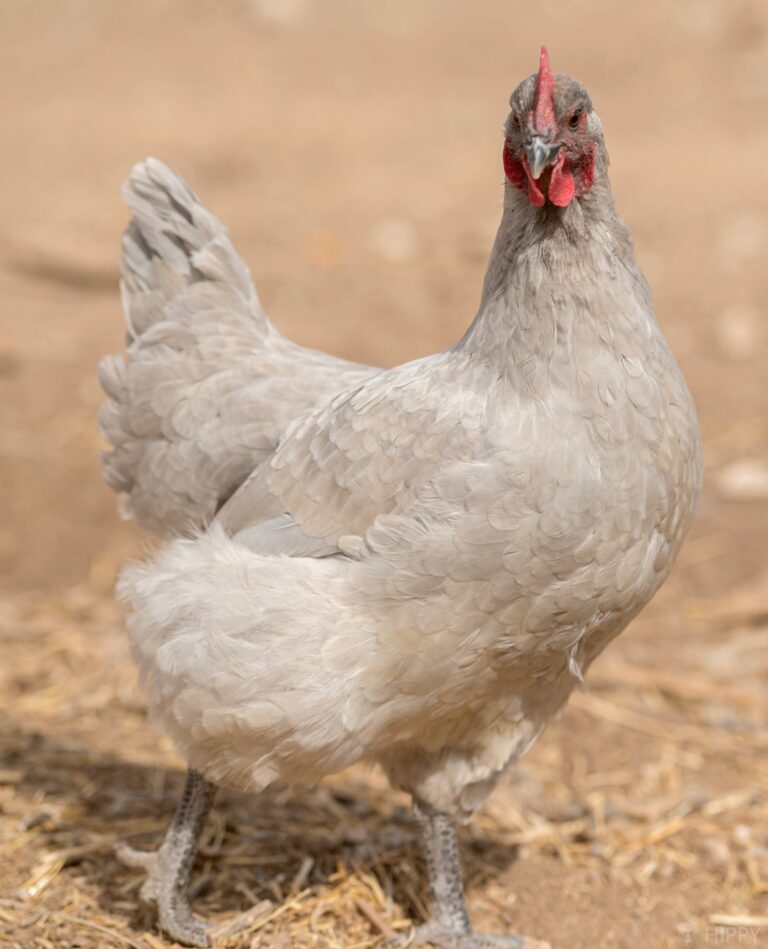
But this broodiness is a double-edged sword if you want eggs: when a hen decides she is ready to sit on a clutch and hatch them, she’ll stop laying, and this can sometimes set off an epidemic of broodiness in other hens!
That would, obviously, bring your egg production to a standstill!
Orpingtons are also a natural choice for anyone living in very cold conditions, because that super fluffy plumage makes them extremely resistant to cold.
It has to be truly bitter outside for Orpingtons to be the least bit bothered by it…
But once again, there is a trade-off to that cold hardiness: those super fluffy feathers are the perfect home for mites and other parasites as discussed, and it is vital that you regularly inspect Orpingtons for any sign of infestation, a process that can be lengthy because they have so many feathers to dig through!
But these are relatively minor concerns, all things considered, and Orpingtons are among the most popular heritage breeds for a very good reason.
FAQ
Lavender Orpington chickens are rare, or relatively rare compared to other Orpingtons.
Lavender is not a variation that is recognized by any international association, and accordingly breeding standards are fast and furious – all over the place! That can make tracking down a genuine lavender mutation difficult.
Because of the increased popularity, expect to pay a high premium.
Lavender Orpingtons are not autosexing, but they do produce some reliable sex links when bred with other Orpington variations.
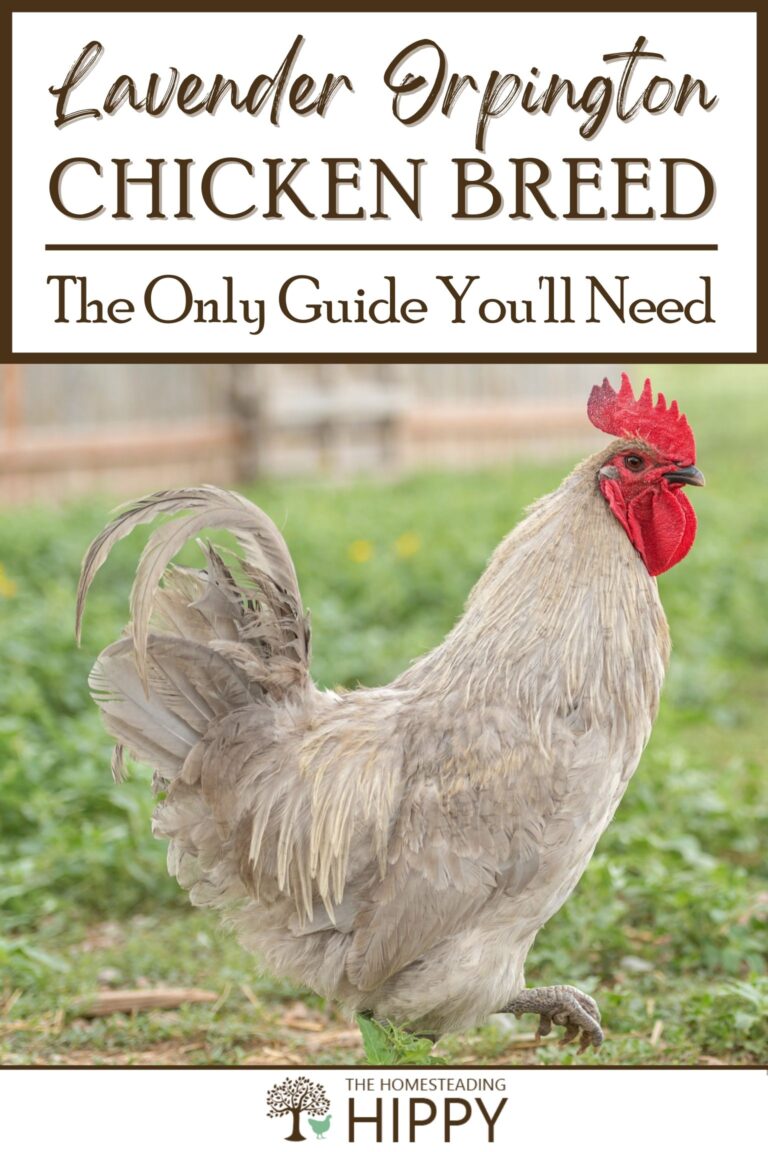
Tim is a farm boy with vast experience on homesteads, and with survival and prepping. He lives a self-reliant lifestyle along with his aging mother in a quiet and very conservative little town in Ohio. He teaches folks about security, prepping and self-sufficiency not just through his witty writing, but also in person.
Find out more about Tim and the rest of the crew here.
